Much of the history recounted below is from David Igler’s Industrial Cowboys and Mark Arax’s The Dreamt Land. Much appreciation to both. Also, kudos to Lois Henry for journalism in the great tradition.
 From the very beginning, water in the San Joaquin Valley has been manipulated, controlled and adjudicated by the wealthy and powerful. Its history is a story of exploitation, mostly through the use of serf labor, the courts, and public subsidies.
From the very beginning, water in the San Joaquin Valley has been manipulated, controlled and adjudicated by the wealthy and powerful. Its history is a story of exploitation, mostly through the use of serf labor, the courts, and public subsidies.
The founding principle that made it possible for the powerful few to extract huge profits from a public resource was, “first in time is first in line.” When applied to law, the corollary to the “first in line” principle became, “first in right.”
The major players in establishing water law in the San Joaquin Valley, and, by extension, in the entire state — those who were “first in line” — were George Lux, Henry Miller, and James Ben Ali Haggin.
Lux and Miller were San Francisco butchers who became business partners. By 1870, they had achieved one of the earliest examples of vertical integration in the west by owning every aspect of the meat business, from the land, to the cattle, to the packinghouse, to the shop that sold the product.
James Haggin arrived in the San Joaquin Valley at almost the same time as Lux and Miller. Instead of cattle, however, he raised crops. He was the first in the Valley to use irrigated agriculture on a large scale.
As early as the late 1870s, Haggin owned over 160,000 acres of Kern County land north and south of Bakersfield alone. By the 1880s, Haggin’s Kern County Land Company had increased its holdings to over 370,000 acres. At the same time, Lux and Miller claimed over 120,000 acres of Kern County land, acreage that amounted to only a small portion of their huge land holdings in the vast Central Valley.
The dispute between the two agricultural giants arose over Haggin’s diversion of water from property he owned along the Kern River to feed his crops. When he steered water away from its natural course, land owned by Lux and Miller dried up. In 1877, Lux and Miller lost almost 10,000 head of cattle as a result.
The lawsuit that ensued, Lux vs Haggin, established two principles that many argued, “created chaos by shackling the state with two fundamentally incompatible water allocation systems.” The “fundamentally incompatible systems” pitted “appropriative rights” against “riparian rights.”
In their first suit against Haggin, filed in 1879, Lux and Miller argued that the slough that watered their land was a natural watercourse that provided riparian rights established as far back as English common law. Though they lost that first suit, by 1881, the courts had decided in their favor, but only through a convoluted decision that also asserted that because he owned land along the Kern River, Haggin had “appropriative” rights to “reasonable” water use as long as his usage did not infringe on the riparian rights of others. The ruling thus permitted Haggin to divert water from the river for his own use, as long as there were no negative impacts to the rights of others.
Lux vs Haggin established precedents that did indeed create “chaos.” Among other things, the decision tied water usage and rights to land ownership, implying that ownership of land was a prerequisite to water rights.
One-hundred years later, another historic suit, National Audubon vs Superior Court (1983), illustrated the harm that can ensue when water is appropriated to increase land values and promote growth. This case came about after the City of Los Angeles had acquired water rights to four out of the five tributaries that fed Mono Lake, a highly saline body far to the north and east of Los Angeles.
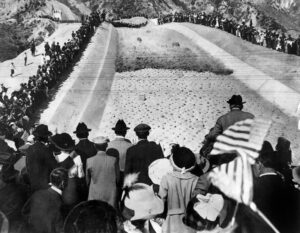
Water from the tributaries became necessary when Los Angeles’s demand for water grew beyond its supply from the Owens Valley, rendering the formerly fertile Valley useless for agriculture. Owens Valley water had been conveyed to the growing city via the Los Angeles Aqueduct, which was considered an engineering marvel when it became operational in 1913.
By the 1960s, powerful citizens in Los Angeles were promoting public construction of the Second Los Angeles Aqueduct, which was completed in 1970 and immediately added an additional 110,000 acre-feet into Los Angele’s water system. By 1974, water exports from the Mono Basin via the Second Aqueduct had reached 450,000 acre feet per year.
The Audubon lawsuit, which began as a suit against the City of Los Angeles before rising to the Superior Court, argued that diversions from the Mono Lake tributaries had caused environmental damage, especially to Mono Lake. Audubon was joined by a host of other environmental organizations, including CalTrout, which became engaged after world class trout fisheries disappeared from Lee Vining and Rush Creeks.
The Audubon suit was based on Public Trust Doctrine, a principle that goes back to the laws of ancient Rome and the Emperor Justinian. It reads in part that,
By the law of nature these things are common to mankind—the air, running water, the sea, and consequently the shores of the sea. No one, therefore, is forbidden to approach the seashore, provided that he respects habitations, monuments, and buildings which are not, like the sea, subject only to the law of nations. 2. All rivers and ports are public; hence the right of fishing in a port, or in rivers, is common to all men.
The salient point of the lawsuit, that air and water are the common resources of mankind in general, was and still is in conflict with the concept that water rights are consequence of owning land near rivers, streams and lakes. One of the major consequences of associating water rights with owning land has been the rise of water sales, often euphemistically referred to as “transfers.”
Diverting water from where it’s abundant to where it’s scarce is the principle behind dams, canals and aqueducts. The west couldn’t have become thickly populated without such transfers. The California Aqueduct, yet another marvel of engineering, came about as the result of a $1.75 million bond measure passed in 1960. It doesn’t just help irrigate the San Joaquin Valley, it delivers as much as 2.5 million acre-feet to buyers in southern California, including Los Angeles.
However, over time, the practice of moving water great distances combined with the association of water rights with property has resulted in the commodification of a public resource by private enterprise. Now, even Wall Street investors are promoting an “open” water market, which would begin with investments in the Colorado River.
According to Matt Rice, Director of the Colorado Basin Program:
“The convergence of a multi-decadal, climate-fueled drought, a trillion-dollar river-dependent economy, and a region with growth aspirations that rival any place in the country has peaked speculative interest in owning and profiting from Colorado River water”… which … “while extremely unlikely, would present a grave danger to rural communities, farms and ranches, clean, safe, reliable drinking water for people, and ultimately the health and sustainability of the Colorado River ecosystem itself.”
Closer to home, the commodification of water has long been a fait accompli. Water sales from the north part of the Valley to the south are common.
Nearly everyone who promotes water sales offers as justification that transfers of surface water keep farmers and cities from pumping groundwater. It’s a nice thought, but not always an accurate description of how transfers really work.
In the San Joaquin Valley, one of the largest miners of groundwater is the Boswell Company, a $2 billion dollar operation with headquarters in Corcoran. Boswell has over eighty wells around Corcoran alone. Most are 1,000 to 1,200 feet deep. Some are over 2,000 feet deep.
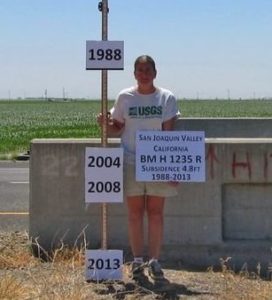
Over the years, because of pumping groundwater by Boswell and others, land around Corcoran has sunk. In some areas, it has sunk four feet since 2015. Based on satellite data, one agency estimates Corcoran,“will sink another 6 to 11 feet over the next 19 years.”
Not surprisingly, subsidence around Corcoran has been costly for its residents, most of whom are farmworkers. Thirty percent of them live in poverty. When the sinking land crushed the casings of four of the city’s wells, tax dollars paid for redrilling the two that weren’t covered by insurance.
In 2017, a levee built in 1983 had to be rebuilt because it had become inoperable due to subsidence. The $10 million cost was paid for by increased property taxes.
One might think that Boswell would prefer to use surface water to continued pumping of groundwater, especially given that justification for sending surface water from the north to the south is to reduce pumping and subsidence. But Boswell, like any profit-seeking entity, looks first to maximize profits. That’s why in 2015 and 2016, the Boswell Company sold 43,000 acre feet of surface water to a Fresno Water District for $43.6 million.
Buying farmland to acquire water rights has become a favored strategy for today’s investors, especially as climate change looms. One of the major players in the San Joaquin Valley is Trinitas Partners, a Bay Area investment firm.
Trinitas began purchasing land in and around the Oakdale Irrigation District (OID) in 2008, much of it grazing land for cattle which they immediately converted to orchards. By 2014, they had 7,000 acres of almonds. They also had what many thought was a sweetheart deal that incensed longtime members of the district.
After a $20 million upfront fee and millions more for infrastructure, Trinitas was annexed into OID ahead of many local farmers who had sought annexation for years. Dependent at the time on groundwater, Trintas spokesman Ryan Paton said he expected to be “95 to 97 percent dependent” on OID surface water by 2016. He also said, “These are long-term investments for us. We’re not short-termers. We’re not flippers. Nothing we have is for sale.”
Five years later, neighboring farmers say Trinitas’s groundwater pumps almost never stop running and Trinitas is now known as “PSP,” because in 2017 it formed a partnership with Canada’s Public Sector Pension Investment Board (PSP).
The commingled groups are known as “Mahi Pono” in Hawaii, where they have recently been charged with greenwashing investments and violating their own ESG (Environmental, Social, Governance) standards. Their presence on the island of Maui has been controversial from the very beginning, mostly because local residents and famers feared they were engaging in a “legislative water swipe” to service their 56,000-acre purchase.
Fears of a water grab intensified in the fall of 2019, when Trinitas/PSP/Mahi Pono hired OID water attorney Tim O’Laughlin as its Chief Operating Officer. Maui Time journalist Deborah Rybak described O’Laughlin as a specialist in, “privatizing public water.”
Anywhere other than the incestuous world of western water, O’Laughlin would be seen as having a huge conflict of interest when representing both the water district and one of its biggest customers. At OID, a district that depends on water sales to balance its books, it’s just business as usual.
OID has to sell water because its first-tier customers get water below the cost of delivery, far below. In fact, farmers in the nearby Modesto Irrigation District (MID) also get their water below the cost of delivery. In the case of MID, however, farmers are subsidized not by water sales but by its rate-paying electricity customers.
When MID tried to sell water to San Francisco in 2011, a roaring public outcry that was joined by local farmers shut the sale down. OID sales and those of nearby South San Joaquin Irrigation District (SSJID), on the other hand, have been met with widespread public approval.
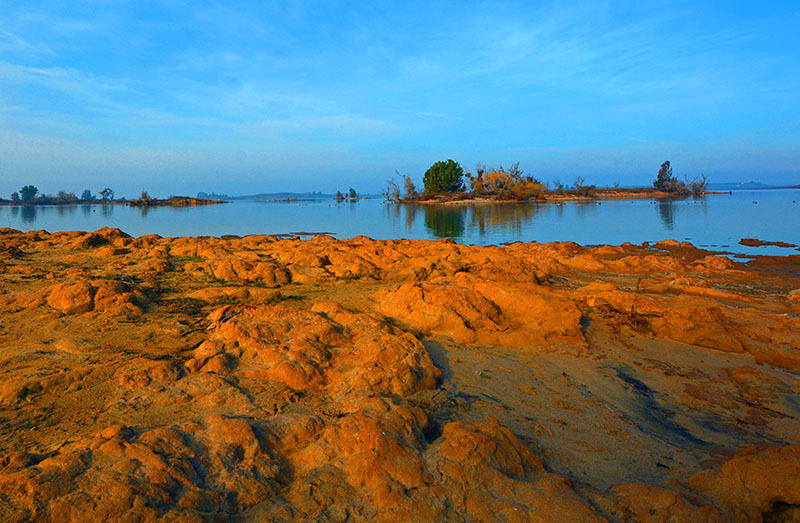
June 23, a Modesto Bee editorial argued that, “the water is not needed by customers of OID and SSJID.” Bee editors added that, “whatever water OID and SSJID can sell is water that parched farms don’t have to pump from aquifers to keep their orchards and crops alive. Preserving precious groundwater is a top priority for all agencies.”
Like far too many Valley citizens when it comes to water, Bee editors seem unable to accept the nearby evidence of their senses. Yes, “preserving precious groundwater is a top priority for all agencies,” including those in Modesto, Oakdale, and Stanislaus and San Joaquin Counties, where PSP/Trinitas and other farmers continue to pump groundwater and deplete the aquifer both within and outside OID, MID, and SSJID boundaries. How much sense does it make to justify a water sale by saying it reduces pumping groundwater when the sale is by a district where farmers continue to pump and wells continue to go dry?
Passed in 2014, California’s Sustainable Groundwater Management Act (SGMA), requires local agencies, “to develop and implement groundwater sustainability plans to avoid undesirable results and mitigate overdraft within 20 years.” Groundwater, like water in general, doesn’t observe water district boundaries, which is why SGMA guidelines refer to the sustainability of groundwater basins, as opposed to city limits, county borders, or water districts in general.
Groundwater near and within the spheres of influence of OID, SSJID and MID is declining rapidly for many reasons, but especially because tens of thousands of acres of nut-bearing orchards have been planted in the eastern foothills of Stanislaus County over the last two decades. The rush to plant trees came about after farmers learned that the Mehrten Formation in eastern Stanislaus County contained the last viable aquifer in the San Joaquin Valley.
The highly permeable “black sands” of the Mehrten Formation are in part fed by nearby reservoirs, including New Melones, Modesto, and Woodward. Before it was drained by the rush to pump, the Mehrten aquifer contained water 1200 years old and older. Now, it would take centuries to replenish that water as the aquifer continues to decline.
As aquifers are depleted, orchards near reservoirs and along the region’s major rivers will doubtless survive longer than others, but that’s only because they are pumping water that belongs to the public, yet another case of public subsidy of private enterprise. By now well-documented, pumping groundwater has been shown to be a major factor in the decline of rivers nationwide, especially in the west. Moreover, pumping groundwater near a reservoir contributes to water loss from that reservoir.
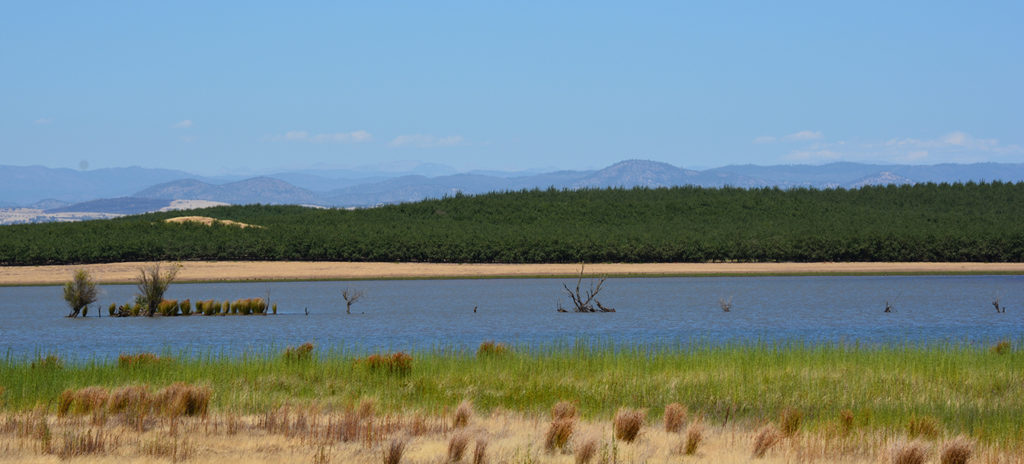
Nonetheless, Bee editors, like most everyone in the San Joaquin Valley, argue that it makes sense to send so-called “surplus” water south, where farmers have drained their aquifers to near depletion and canals and other conveyances are declining in efficiency due to damage from subsidence. Evaporation loss and pumping costs of sending priceless water to distant locations are apparently acceptable “costs of doing business.” What kind of sense does it make to send water elsewhere when wells are going dry in your own back yard?
When government agencies attempt to intervene in water sales and distribution so that the public resource can be distributed more equitably, Valley farmers and their supporters carp about “water grabs.” They never mention the true history of water grabs in the San Joaquin Valley, which began with the draining of the second-largest freshwater lake in the United States, continued with the exhaustion of the San Joaquin River to the point that it dried up for a sixty-mile span, produced one of the largest and most severe areas of subsidence in the world, and continues with the ruination of the San Joaquin Delta.
The ongoing commodification of a public resource for private use and profit has many forms, but in the end amounts to socializing costs while privatizing profits. In addition to the public expense of environmental destruction, commodification results in a grossly inequitable distribution of the fruits flowing from a commonly held resource.
Consider, for example, the case of John Vidovich, who in 2017 owned over 100,000 acres of Valley land. In 2009, Vidovich sold the rights to more than 14,000 acre feet of Kings County water to a San Bernardino County water agency for $73 million. Why should Vidovich have been able to sell a public resource for such inordinate private gain? In the end, did the sale provide an equitable public benefit? What about the lost value of that water to the Kings County economy?
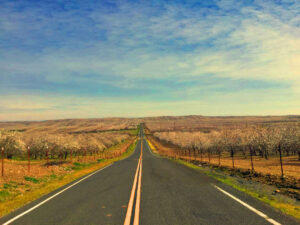
When Lux vs Haggin was adjudicated, the public interest wasn’t even a distant dream. The lawsuit concerned wealthy and powerful men. Today, suits involving water still feature the wealthy and powerful, except in cases of government intervention or when environmental organizations like the Audubon Society come forward to represent the public interest.
When government does intervene, the wealthy and powerful scream, with plenty of help from their flacks and political pawns, “water grab,” and demonize those who favor a more equitable distribution of the fruits of a public resource as “enviros” or “socialists.”
“Reasonable use,” the pivotal principle in the California Water Doctrine, can be defined any number of ways, and will be defined differently by people with different interests. For a great many Valley citizens and people in general, reasonable use of water would include living rivers and living wages for those who toil in the fields. Reasonable use would include potable water for farmworkers who live in towns where the stuff that comes out of their faucets is referred to as “piss water.” It would include viable fisheries, native wildlife in natural settings, healthy ecosystems, and a thriving San Joaquin Delta.
As early as the 1870s, when James Ben Ali Haggin diverted water from the Kern River for his own use, there were negative consequences elsewhere. Today, water diversions, especially in the form of water sales, wound the public interest in any number of ways, but especially by commodifying a public resource so that it becomes the de facto property of private enterprise. The remedy is an engaged public, a willingness to speak truth to power, and greater recognition that water belongs to the people.

Thank you to the Valley Citizen for a fabulous article of historical significance. Water is considered a natural resource for exploitation. Whether the subject is gold, coal, oil, or water, the law allows exploitation of underground resources to the extent of technological limitations.
The private sector has always pushed for such exploitation of what should be public assets out of the belief that optimum economic wealth generation is desirable. Only when shortages develop does the public look to government for review of allocations.
Up until California became overpopulated, the state seemed to have unlimited resources. Deserts were created to enrich various parts of the state with no regard for environmental consequences.
Now that climate change and the intensifying drought have exacerbated shortages, past water allocation will become the subject of ongoing government interventions. Laws will be changed. Deserts will continue to expand, or water manufacturing (desalinization) will become economically viable.
I was hoping the this valuable and enlightening article would end with “more to come”. Please continue to educate the public by commodifying “the rest of the story” with facts about all that has happened between 2015 and 2021.
By the way, today in the Valley Home area it appears that more than 100 acres have been ripped in preparation for nore almonds which beg the questions: what drought? Is China still the real marketplace? Who are the new and real Industrial Cowboys?
There are so many more questions and more issues about our local water, our groundwater use, our local representatives, especially our BoS. In other words, don’t stop now.
Eric:
What a great, detailed piece! Thank you.
For interested viewers, Bill Anelli, MJC philosophy professor and I last week went to the Delta-Mendota Canal just south of Dos Palos, on N. Russell, to video document the impact of the land subsidence there on the canal level.
It has brought the water level up to the bottom of the road’s bridge!
See: Subsidence at the Delta-Mendota Canal: https://youtu.be/w3td9f-DFrA
– Richard Anderson, Biology Emeritus, MJC
I have replaced this DM Canal piece with a better one, so this URL no longer works.
Our new one is still short, 3 min 24 seconds:
“Subsidence of the Delta Mendota Canal” https://www.youtube.com/watch?v=cWdSowu90Ho
I enjoyed reading this informative article and wish more people had access to it.
Water is such an important issue and it is important that we all educate ourselves on
what is occurring with our dwindling resources.
Education is key for sure! How can we get this article out to the public? Thanks to Eric for doing his part. We all need to do ours and spread the word.
Amen and amen, valley water belongs to We, The Valley Citizens.
Something else that belongs to We, The Valley Citizens, IT is: CHUTZPAH. Do not be afraid to use IT.
Look up the definition, and start using IT, on anyone who thinks water is a property to be owned, by a few, just because it can be extracted from land deeded to greedy men and women, who dare to put a price tag on such a life giving resource.
In reality, no one truly ever gets away with evil. It all gets exposed, one way or another, sooner or later.
There is a legal definition known as: “dirty hands”. Some, men and women, even have BLOOD on those dirty hands. Raping, pillaging, and colonizing the land and its people. Creation is a gift, but many look down on OUR gift.
Don’t cancel people, instead, speak truth, in no uncertain terms.
Stop winking at corruption, just because it seems to have always been a certain way. Recognize your minds have been colonized. Don’t take more than an equitable share of ANYTHING. And, practice replenishing all that you are able to…
Otherwise, there is a way before men that seems right, BUT the end afterwards is…
We must humble ourselves, and, turn to Life giving ways: sharing, and, never taking advantage of, or, competing with, others… 2 Chron. 7:14
You forgot to mention the fact that we flush millions of acre feet out to the ocean above and beyond what is needed for delta salinity control most years especially during wet years. Increased environmental regulation has contributed to this by mandating more water be flushed to the ocean in the name of supposedly protecting fish. Meanwhile predatory species which were introduced (Strippers and other bass) decimate the native species (salmon) and partially treated sewage from Sacramento and Stockton is allowed to flow into the delta causing further damage. In addition, because surface water deliveries have been reduced because of this then people have turned to more groundwater causing the challenges we currently face. But it is easier to blame farmers and not the “public” for the effects of these decisions. We are living off of a water system that was designed for a much lower population than currently exists. The “public” has not invested to increase infrastructure and capacity like it should have the past 40 years or so to use the water we are blessed with in the good times. Instead those funds have been wasted on increased regulation, additional bureaucracy, social welfare programs which have not fixed anything and other boondoggle projects such as high speed rail.
While I agree with a lot of the feelings in the article regarding Investment groups and wall street funds coming into the agricultural and water space. I do not agree with the communist language used to address the issues we face here in the valley. The fact is that the government does a very poor job of allocating resources. Look at all the bureaucracy that has been created to supposedly fix the problems we have had. They have done a poor job. But then if they did fix them then a lot of people would be out of a job were they have little or no accountability.